Attractions
a. Geological attractions
Matsu’s Rocks
Matsu has huge variety of rocks and each contains certain unique mineral components. Dongyin's diorites contain more amphibololites and feldspats than granites, and hence their name in Mandarin, literally meaning “a combination of amphibololites and feldspats.” Rhyolites in Tsaipu'ao, Xiju, have a different crystal structure than that of granite, because they result from magma quickly cooled after rushing up to the Earth’s surface. The dykes and bedrocks formed in different time periods have different colors and patterns. They are all worth some appreciation during an eco-tour.
Pyrogenetic Rocks
When magma cools down and contracts, neat cracks are formed. Penghu’s basalt rocks are one good example of this phenomenon. Some of the joints of Matsu’s granites and diorites are vertical, while others are horizontal and diagonal. If you ever take a boat trip to observe Matsu, you shall find out that Matsu’s coasts, especially coastal cliffs, are influenced by the distribution and density of rock joints.
The joints are also more prone to ocean abrasion. Ditches and caves take shape when sea water seeps into the rocks through the joints. In other words, the distribution and density of rock joints affect the level of weathering, or erosion.
Much of Matsu’s geo-scape derives from rock joints, such as the Thread of Sky and Suicide Cliff in Dongyin. The rock joints in these two places continue to widen as ocean water and winds take effect. The larger joints of the Thread of Sky expand from the ocean surface all the way up to the top of mountain walls, resulting in the magnificent scene. Looking at the Thread of Sky from the Suicide Cliff, one can find almost-vertical abraded cliffs by Tianwangao. These cliffs are not just influenced by ocean abrasion. The natural layout of the diorite joints results in the cliffs’ vertical shape.
Granite
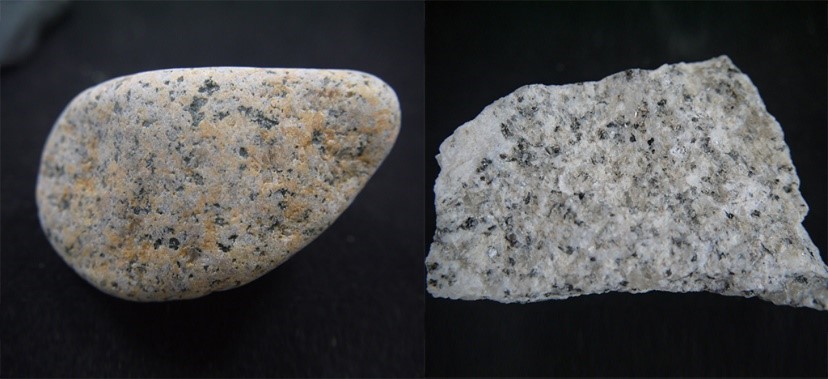 Granite is a common type of pyrogenetic rocks. It crystalizes at a low temperature, at the last phase of the cooling-down of magma. The magma at this phase is still deep under the ground, under high pressure. Hence granite is classified as plutonic rock. It takes a relatively longer time for granite to become crystalized, and therefore within a piece of granite, larger mineral crystals can be found.
Granite is a common type of pyrogenetic rocks. It crystalizes at a low temperature, at the last phase of the cooling-down of magma. The magma at this phase is still deep under the ground, under high pressure. Hence granite is classified as plutonic rock. It takes a relatively longer time for granite to become crystalized, and therefore within a piece of granite, larger mineral crystals can be found.
Granites are mostly in light colors. The white parts are feldspar and quartz, and the pink parts are orthoclase. There are also semi-transparent and non-transparent crystalized quartz. Mica in granites is also semi-transparent and usually appears as thin slices.
Matsu’s hard and beautiful rocks are often used as building materials. Qinbi Village in Beigan, Jinsha in Nangan and Fuzheng in Dongju all use granites extensively.
Rhyolites
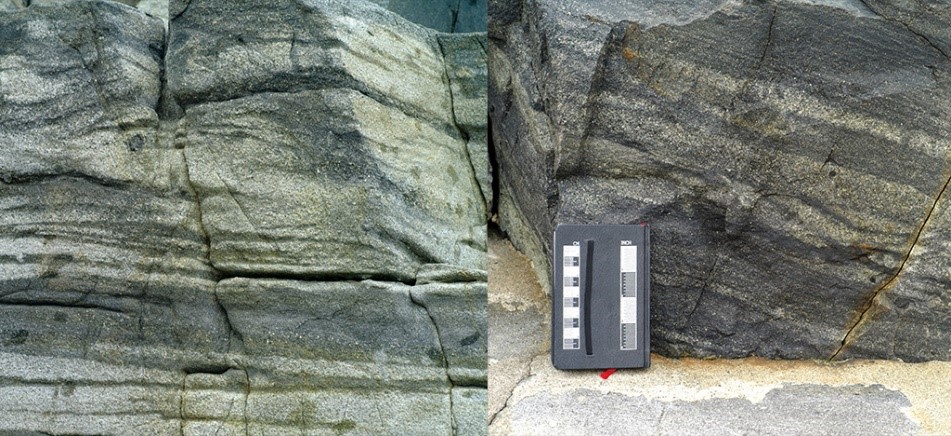 Rhyolites are a kind of effusive rocks, meaning that they result from magma quickly cooled and congealed after rushing out to the Earth’s surface during volcano eruptions. Rhyolites are mostly composed of felspat, quartz and mica, in addition to a few amphibololites. Rhyolites’ mineral components are similar to those of granites, although the crystals are finer and therefore it is not easy to observe them with human eyes. Most of the rhyolites are of light colors, such as white, grey and red. In Tsaipu’ao Strong Point in Xiju, one can find rhyolites, which are rare in Matsu. It is therefore worth a trip to Xiju.
Rhyolites are a kind of effusive rocks, meaning that they result from magma quickly cooled and congealed after rushing out to the Earth’s surface during volcano eruptions. Rhyolites are mostly composed of felspat, quartz and mica, in addition to a few amphibololites. Rhyolites’ mineral components are similar to those of granites, although the crystals are finer and therefore it is not easy to observe them with human eyes. Most of the rhyolites are of light colors, such as white, grey and red. In Tsaipu’ao Strong Point in Xiju, one can find rhyolites, which are rare in Matsu. It is therefore worth a trip to Xiju.
Xenoliths
Crustal movements bring older rocks into flowing magma. As a result, one can find older rocks wrapped up by newer pyrogenetic rocks. When there are a variety of older rocks in a pyrogenetic rock, the rock is called xenoliths. Xenoliths are most commonly seen in the intertidal zones of Fuzheng Beach, Dongju.
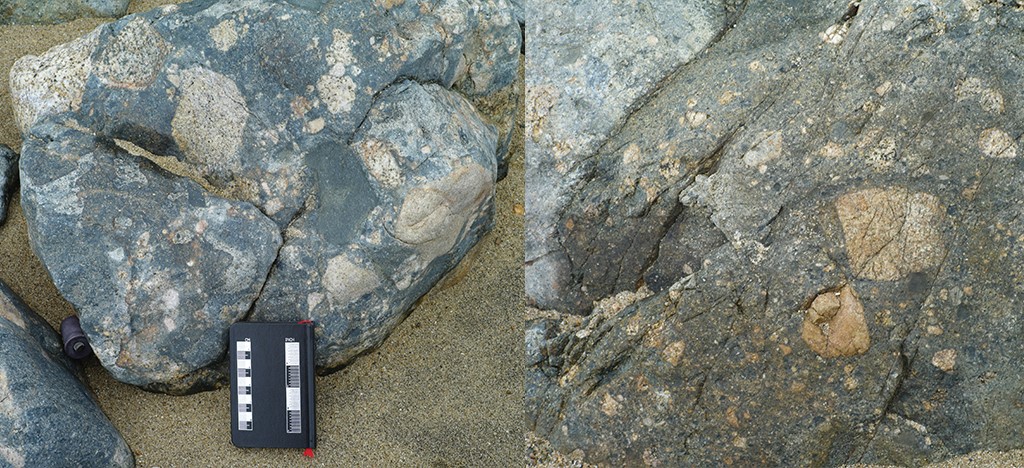
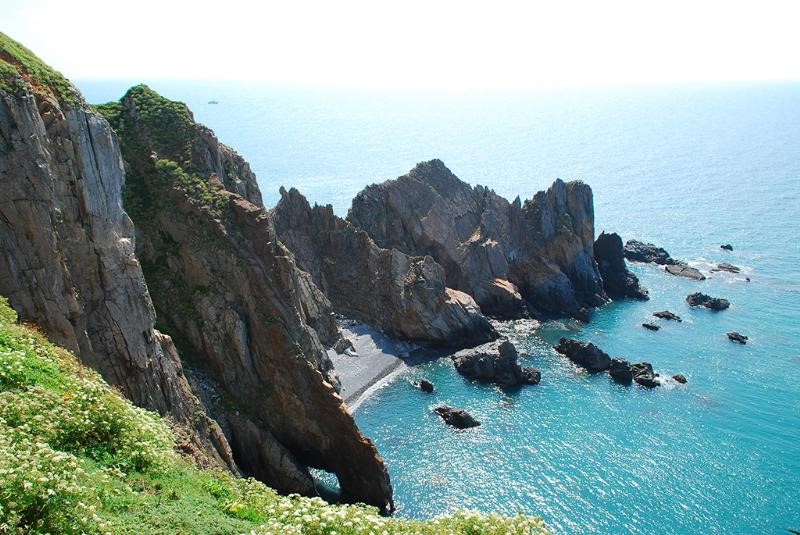
Matsu was composed of many small islets and it has a fairly long coastline interrupted by capes and bays. During the Ice Age, these islets were all part of the Chinese continent. The islands only took shape after the end of this last Ice Age ten thousand years ago, when the globe became warmer, resulting in a fast rise of the sea level.
The rocks on the Matsu Islands are mostly granites which date back to the Mesozoic Era (about 250 to 6.5 million years from now). On the earth surface are rhyolite volcanic rocks. Magma of later periods can also be found in granites, resulting in dykes of different colors.
Matsu’s landscapes are much influenced by its geological structure. Granites, Matsu’s main component of rock layers, weather rather slowly. It takes a long time for surface granites to transform into a thin layer of earth.
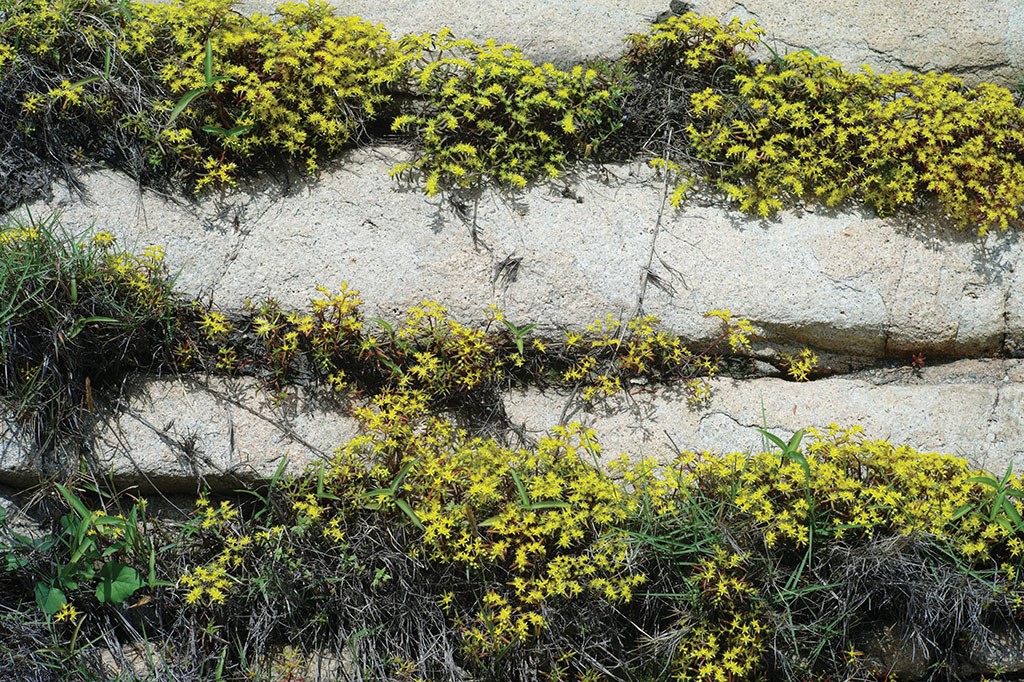
Plants popping out from among rock joints by a rock trail along Wusha Coast
b. Matsu’ culture Wartime Remains
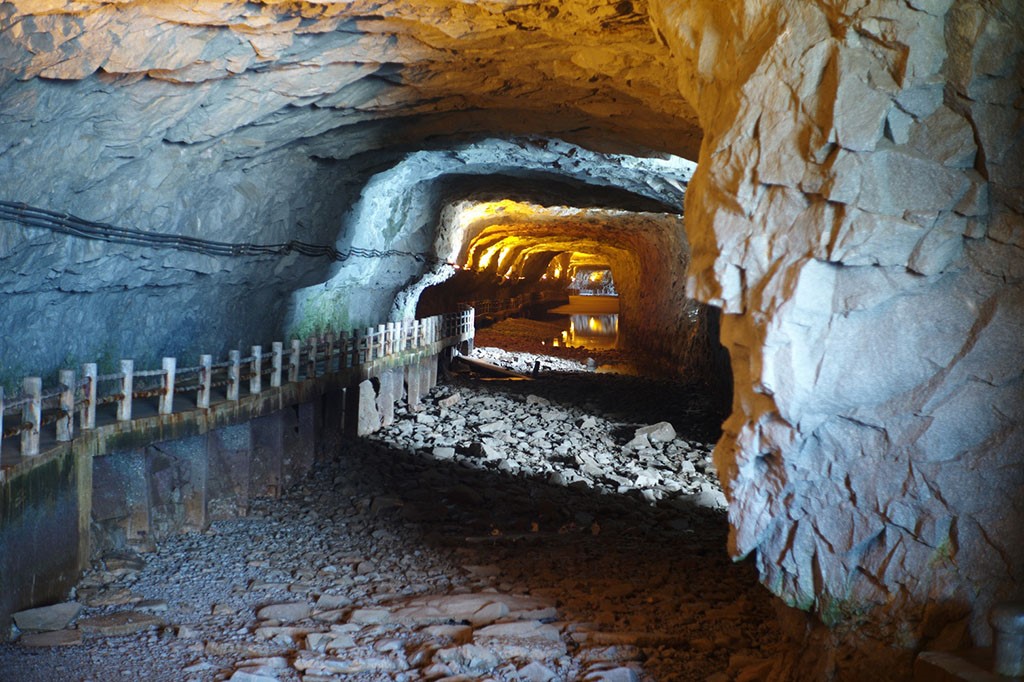
Tunnels are among the most important sights of the Matsu Geopark. Take a walk inside the tunnels and you shall learn more about Matsu’s rocks. Tens of thousands of workers died while building the tunnels. It was only until 1992 when Matsu was no longer an officially listed warzone that the tunnels became accessible to general visitors.
Nangan’s Beihai Tunnel and Dongyin’s Andong Tunnel are much recommended for those wanting to immerse in wartime remains. The tunnels are made out of granite caves; plenty of stories surround the rocks, which are worth some appreciation. It is these rocks that make the Matsu Geopark special.
The granites and diorites in the tunnels don’t have apparent joints. Some of the rocks still look quite rough in the tunnels today. One can also easily find magma of later periods in older rocks. Such magma’s color is usually different from that of its surrounding rock layers.
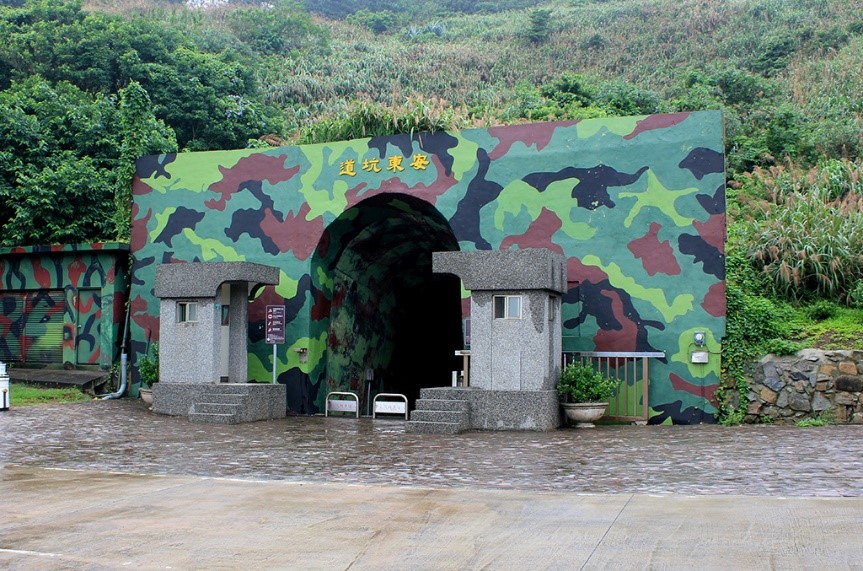
Entrance of Andong Tunnel in Dongyin
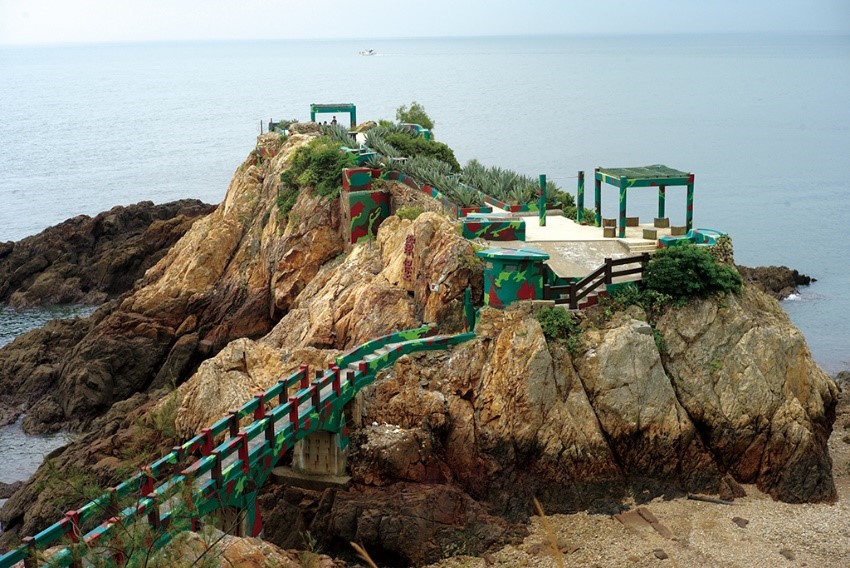
The Iron Fort Stronghold
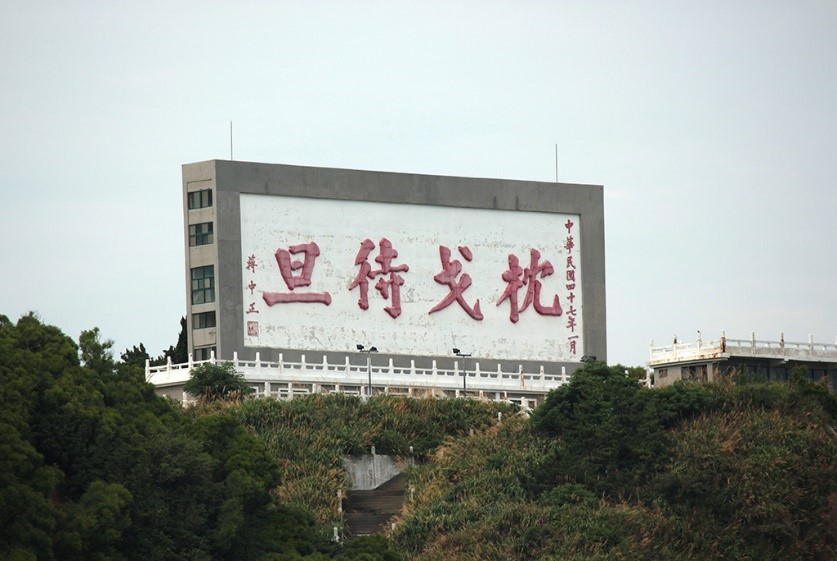
Military slogans in Matsu
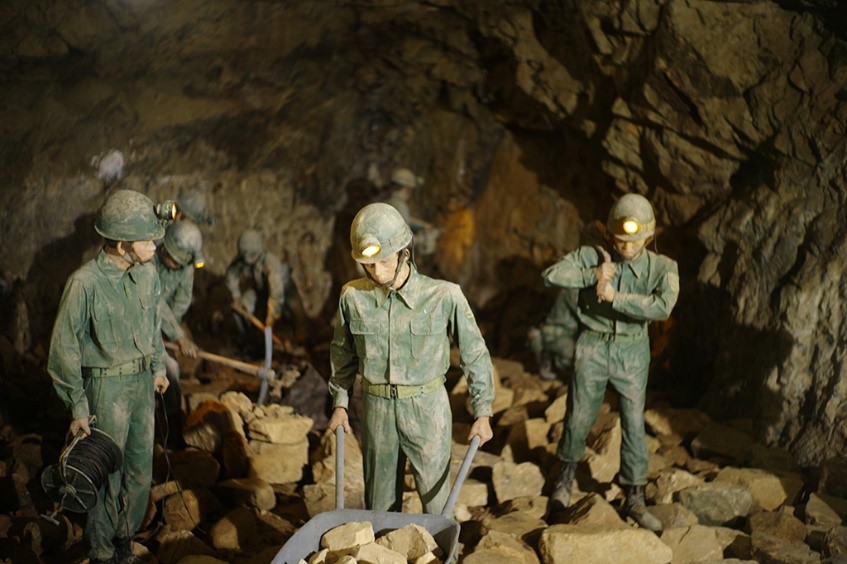
An example of the digging of Beihai Tunnel
Religious Culture
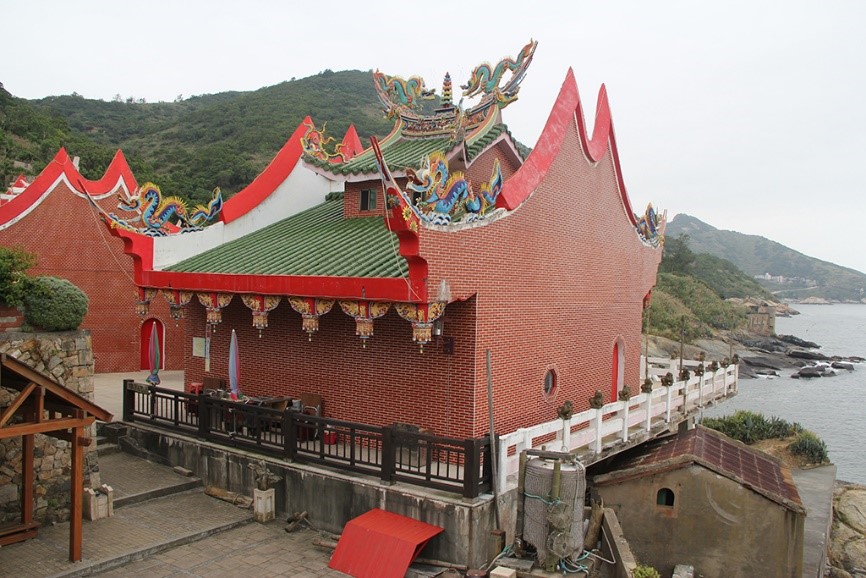
The early residents of Matsu came from Lianjiang and Changle of Fujian Province, China. Therefore, the temples here are mostly of the Mindong-style, with tall fire-proof walls. Some of the walls have bright colors and interesting shapes (temple walls). Others are more low-keyed (residential walls).
Most of the early Matsu immigrants came from Mindong. They brought statues of village deities such as the White Horse King to Matsu and continued the worship. Such became a major cultural characteristic of Matsu.
Matsu's legends show that religion beliefs are quite diverse here. Goddess Mazu is among the most respected deities. Matsu’s temples are mostly made with local materials, except cedar wood from Fujian. If you ever take a geological tour in Matsu, be sure to visit its temples to see how locally produced stones are used.
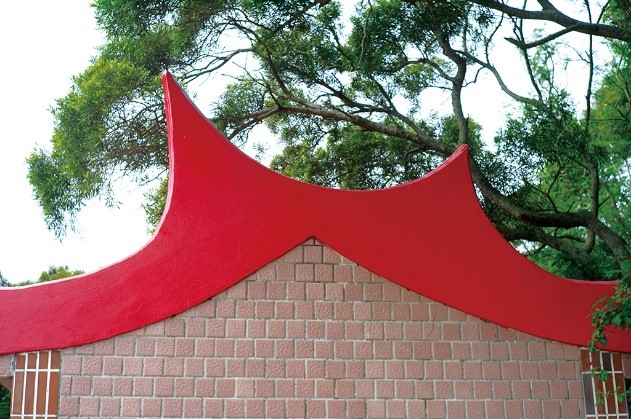
Fire-proof walls are a major feature of Matsu’s religious buildings
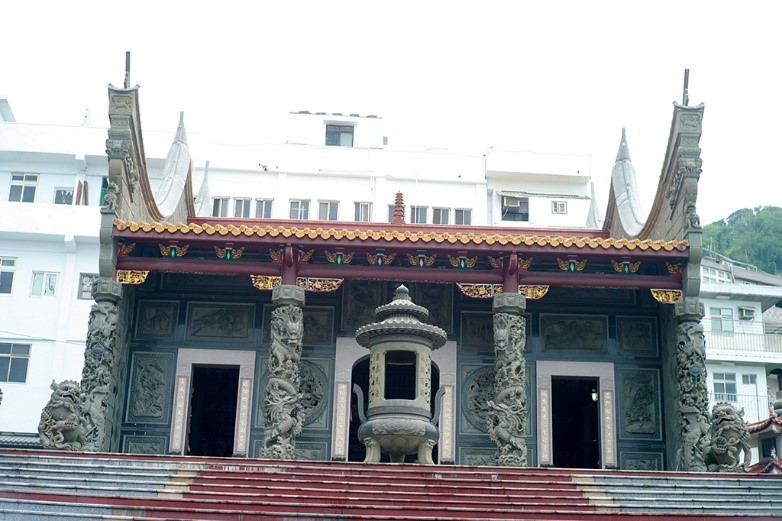
Marshal Chen Temple, Xiju
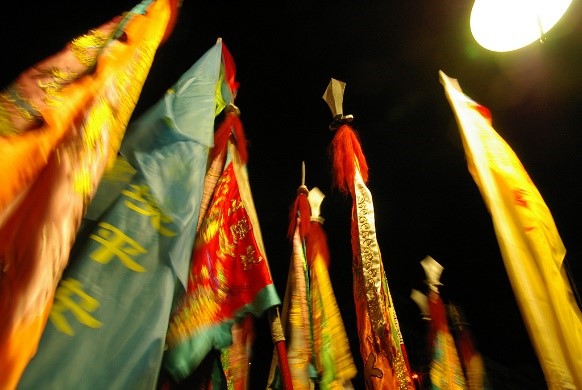
Lantern “Baiming” Carnival
“Baiming” literally means to “display sacrifices in the night,” which perfectly explains the content of this traditional rite. Originated in the agricultural villages in early-day Fujian, China, preparations of the Lantern Baiming Carnival starts from 11th of January in the lunar calendar in Matsu. Pavilions are set up one after another on village squares and temples, followed by a round-the-county parade participated by sedan teams carrying statues of local gods. Each temple has its own schedule for the parade and follow-up worships. Visitors are welcome to follow the parade and take pictures. Why not check out the schedules and choose one that interests you the most!
Most of Matsu residents’ ancestors came from Changle and Lianjiang in Fujian. In the early days, the fishermen from those places would stay on the Matsu Islands during the fishing season, especially on bad winter days which kept the fishermen from going home for the New Year. On January 15 of the lunar calendar, it was decided that the fishermen light up lanterns so that their families on the other side of the seas knew they were safe. That’s why in previous years the Matsu residents still hung up lanterns from January 15 to 28. The lanterns, adorned with red paper strips, are full of nostalgic charm.
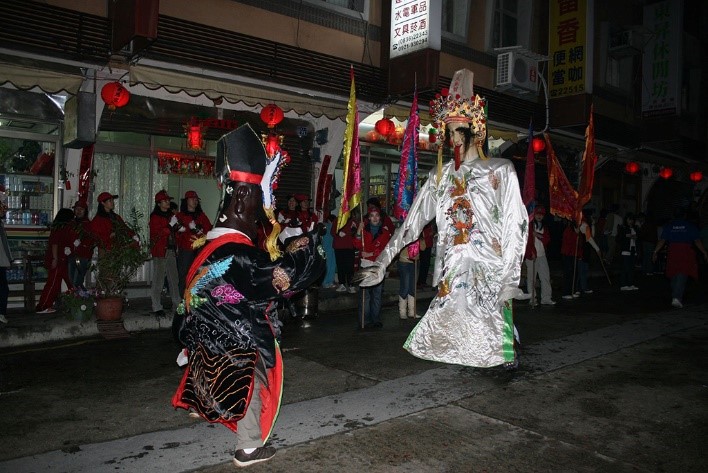
Baiming(1)
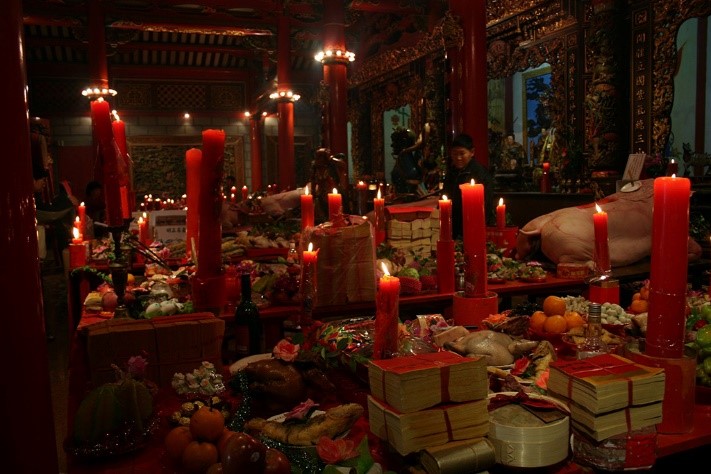
Baiming(2)
Traditional Architecture
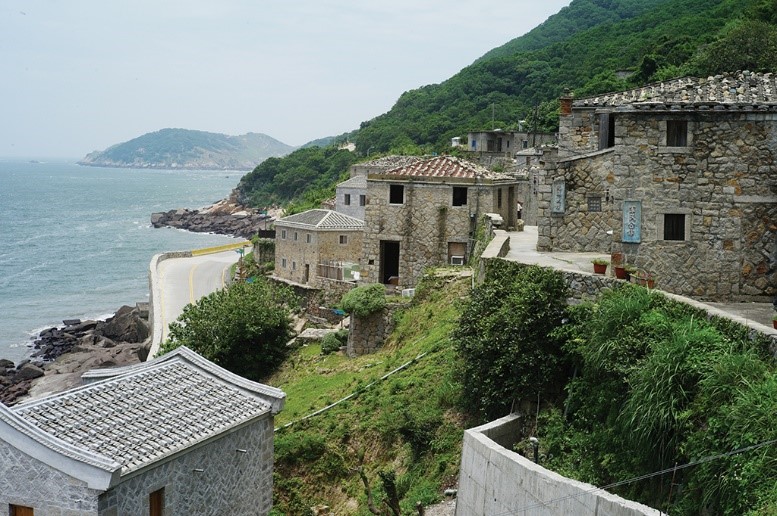
Cultural and historical sites are also important parts of the geopark. In the past, Matsu was known for its “ebbs and flows of Lianjiang waters and the stones and tiles of Mindong houses,” and people spoke of Matsu as “a string of pearls” at the outlet of the Min River. The residents of Matsu are also famous for their determination to fight against all odds. All such makes Matsu different from Taiwan proper.
Mindong architecture is the highlight of Matsu’s cultural landscape. Qinbi Village of Beigan is the most well-reserved and most representative Mindong settlement. The four-section red-roofed houses made with thick granites look like seals and are therefore called “seal-shaped architecture.” They lean against the mountains and face the seas. The walls are constructed with the “up-side-down V” method, making the stone plates neat and tight, while still leaving room for ventilation. Hence the houses are also known as “houses that breathe.”
Slogans like “Killing Chu and Eradicating Mao,” “Against Russia’s Invasions,” and “Reunifying China through the Three Principles of the People” can be widely found on residential house walls, forming a strange scene. There are nearly a hundred such houses but all are uninhabited now. Thee houses’ fine walls and windows are testimonies of Matsu’s splendid old past. Other than Qinbi, Fuzheng and Dapu in Dongju and Jinsha in Nangan are also classical traditional villages.
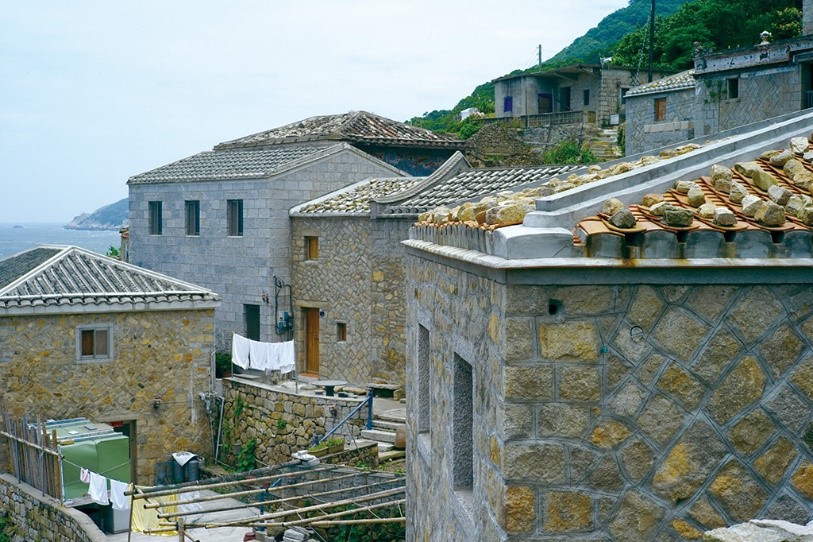
Seal-shaped architecture
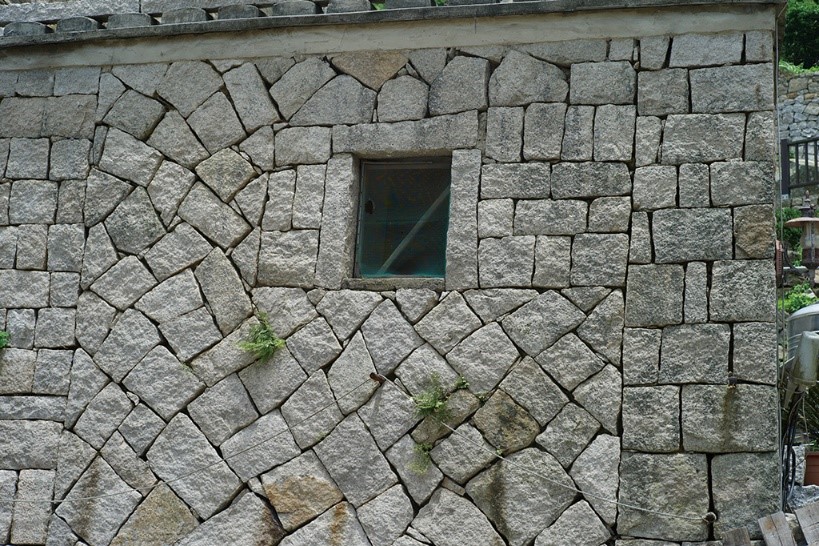
External granite walls, usually made with horizontal or “upside down V” brick-building methods
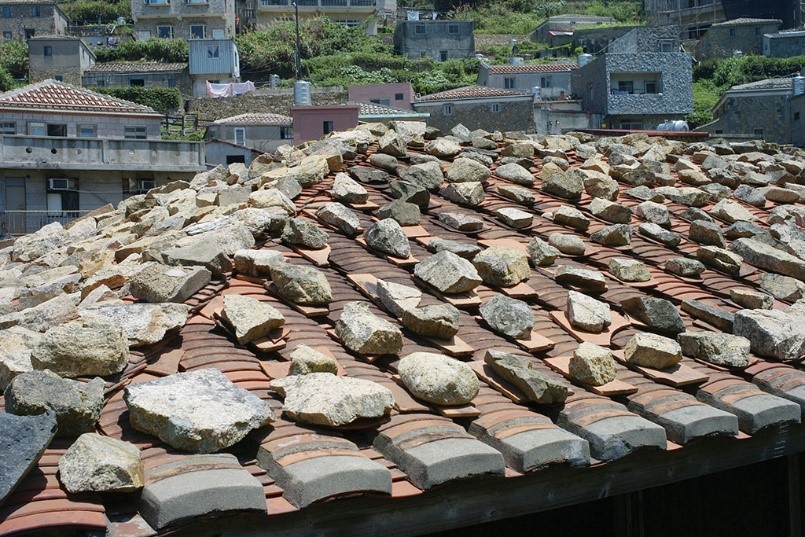
Roofstones
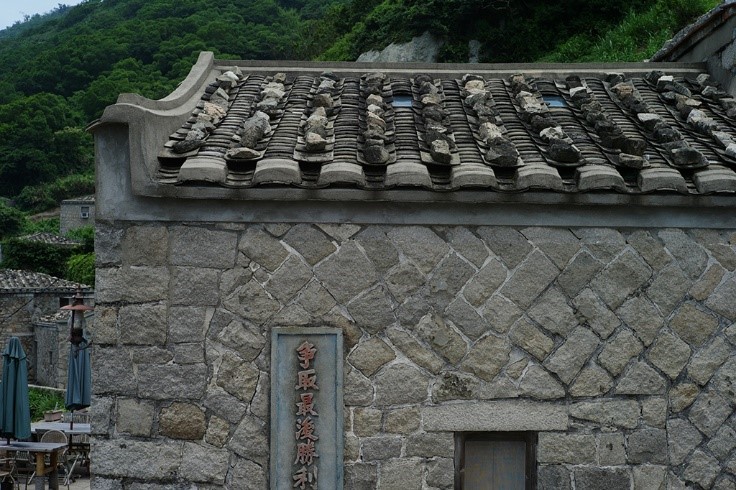
On the granite walls are military slogans left from times of war
Cuisines, Liquors and Wines
Matsu Cuisines
With gastronomy traditions kept in various villages and households, Matsu is famous for many traditional repasts and snacks. Among them are famous Tunnel 88 Kaoliang Liquor, Old Wine Rice Noodles, Fish Noodles, Jiguang Cakes, etc. For authentic taste of Matsu, the followings are some mouth-watering snacks that you should try.
Rice Noodles with Old (rice) Wine (老酒麵線)
As old (rice) wine making is a family tradition, many households have their own favor in cooking old wine with rice noodles. Rice noodles with old wine is a dish used by Matsu people for various occasions. In particular, it is considered excellent for keeping one’s body warm in wintertime and keeping postnatal women from chilling and secreting abundant breast-feeding milk. Old wine is cooked with thin rice noodles and eggs to bring out the best of the old wine. The fragrance of old wine combined with the fine rice noodles and boiling alcoholic soup makes old wine noodles a special dish that you will never forget.

Seaweeds (紫菜或海菜)
Seaweeds grow from the cracks between rocks in shallow seashore. There are “winter seaweed” and “spring seaweed.” The winter seaweed, longer and cleaner, is harvest in winter, which tastes both crunchy and hard. Since the harvest of winter seaweed is low but the quality is good, and its price is higher, especially during the Chinese New Year to Spring Festival. Spring seaweed, with lesser quality, is those growing after the winter seaweed is harvested. Seaweed can be stored for a long time if dried completely. Both dried and fresh seaweed can make excellent dishes. Fresh seaweed is great ingredient for seaweed salad which is a great appetizer. Dried seaweeds are good for just any uses in cooking.
Pork Wontons (Meat Wontons,肉燕)
Pork wontons (meat wontons or meat wraps) is a luxurious version of wonton. It is a must-have for traditional holiday dishes in Matsu. Meat wrap is made of top class pork meat, skimmed and de-veined. It is then finely ground and added with potato flour. Add water and roll them into dough. Then cut the dough into desired pieces. Flatten each piece to thin it, and hand press and toss it to make a thin wrap (a wonton wrap).
If dried completely, the meat wraps can be stored for a long time. The meat wraps are best if thin sliced/shredded as part of soup ingredient or stir fried with broccoli. To use the meat wrap as regular flour wrap, one will prepare finely ground pork meat (or fish meat), other desired finely chopped vegetables or mushrooms to be used as stuffing. Then wet the wraps sparsely so that they become flexible and envelop the ingredients (finely chopped stuffing) to make wontons. Bring water to a boil, and place the wrapped wontons into the boiling water. When the meat wonton soup is done, sprinkle some black or white pepper powder to add flavor. Now, enjoy you wonton soup!
Buddha's Fist (佛手)
The Buddha’s fists are a close relative of barnacles. They are shellfish resembling the shape of Buddha’s hands or the claws of a turtle. Matsu locals call them turtle’s claws. Some call them "Buddha's hands" or “Buddha’s feast”.
It is fresh and delicious to the taste, but eating it requires a delicate technique. When you eat the shellfish, you will hold on to the claw part, and bite off the hard shell. Then you can enjoy the fresh meat inside.
Be cautious: the black portion at the front of the claw is not edible.
Mussel (淡菜)
Mussels are also called “Yibei”. In Taiwan, Matsu is the only place where mussels live and become available. Mussels have a sweet taste and they are rich in vitamins and minerals. When Matsu mussels are in season, coming to Matsu to taste mussels is popular among some Taiwanese mussel lovers.
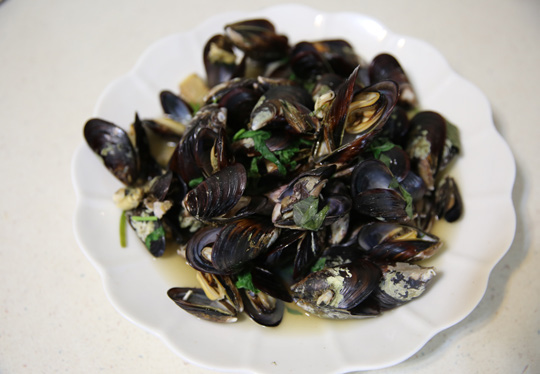
Red Vinasse (紅糟)
The Red Vinasse is the residue out of rice wine making. This residue is called “hong-zhao” in Chinese. Households use red vinasse for almost every local dishes, in particular eel, fish, meat, chicken and fried rice.
Medically, red vinasse is proved to be good for lowering cholesterol, reducing blood fat, boosting blood circulation and fighting fatigue.
Many households of Matsu make their own rice wine and sell the red vinasse sauce to local specialty stores.
The reasonable price and natural ingredient make red vinasse popular with tourists.

Wok Edge Paste (鼎邊糊)
This dish was originated in Fuzhou (China). The main ingredient is rice milk. This is poured onto the edge of a hot wok. It cooks quickly and is scraped from the wok with a spatula. It is then stewed together with fish, meat, other seafood, vegetables and chicken or pork broth. This tasty dish is popular among Matsu households. The Shanlong Shizi Market in Nangan Township has a shop serving the soupy paste. The market only opens in the morning from Monday to Saturday.

Golden dumpling (地瓜餃)
Golden dumpling is a Matsu dessert. Its wrap is made of sweet potato starch and flour. Its stuffing is made of crushed peanuts, brown sugar, dried green onion, and sesame seeds. To make it even tasty, sometimes various spices and (pork) lard are added. Golden Dumplings can be steamed, deep-fried and can even be used for sweet soup. As the ready-made golden dumplings are often frozen in the super market, a market of frozen food delivery is fast developed for the sake of mailing the dumplings elsewhere.
Jiguang Cakes (繼光餅)
Jiguang Cakes was named after the Ming Dynasty general Qi Jiguang who ordered his troops to make their rations into cakes for marching season. The cakes were threaded onto a string and worn across the neck of a soldier for easy carrying and easy use. Matsu Jiguang cakes used to be made in traditional way by sticking them onto the interior wall of an oven, but now most are made in a modern oven. They are often served with ham or egg filling and are known as “Matsu hamburgers.” Most hostels serve them as breakfast to entertain their guests. These can be bought every morning in the Shanlong market (in Jieshou Village) of Nangan. Many restaurants also serve these cakes.

Matsu fish meatballs (馬祖魚丸)
Fish meatballs are popular dish or ingredient for daily diet. They are often made of the local abundant marine catch, mainly brown croakers and eels. Handmade fish meatballs are springy and bouncy. One may even call them meatball al dente.
Fish meatballs have different sizes and shapes. Big fish meatballs usually contain chopped pork to assorted vegetables stuffing. Small fish meatballs are often plain basic meatballs with the fresh taste of fish. Fish meatballs are best for soups. Either one cooks them along with only limited seasoning, such as white pepper, green onion, cilantro and a dash of sesame oil, they will boost your energy and spirits with authentic Matsu freshness and gastronomy happiness. If you preferred. Also, a dash of Matsu vinegar will make the soup perfect.
Fish Noodles (魚麵)
Fish noodles are historically and traditionally important for Matsu daily life. Fish noodles are a way to preserve abundant fish catch and provided for times when catches are low. Fish noodles can be made of eels,
beltfish (or silverfish), pomfret (or butterfish) or brown croakers. The fish is ground and then potato flour (or corn flour) is added to make it into paste and salt is also added for taste. Fish noodles are authentic dishes for traditional festivals and holidays of Matsu.
The ratio of fish and flour, the type of fish used, and even the process done all contribute to the quality of fish noodles. Thus, fish noodles are different from different makes or different families. They all have the freshness of noodles but without fishy smell. The most common way of cooking fish noodles is to cook them with bok choy (or Chinese cabbage) and small dried shrimps. Served either in soup dish or in dry dish, fish noodles are versatile in taste and perfect for the stomach to feel fulfilling. Fish noodles will not become mushy even over cooked; therefore, the locals use them for hot pods as well.

Oyster cakes
Oyster pie (Ti-cake or Ti-bin as called by the locals) is a snack sold by vendors on the islet of Nangan. It is so common that only street vendors would sell them. Oyster cake is made of the mixture of oyster, chopped pork meat, crushed peanuts, shrimps and rice noodles. The mixture is then enveloped by rice flour paste and then fried in boiling oil. The fried pocket cakes are golden brown outside and steaming hot inside to make it a juicy and delicious snack.
Liquors and Wines
Matsu Old Wine(馬祖老酒)
Many households of Matsu are good at fermenting their own rice wine. Selecting top grade (glutinous) rice
photoed by Wang, Jian-Hua(王建華)is the key to making good rice wine. Rice wine can be made and ready to drink in 30 days, although it becomes better with time. That is one of the reason Matsu people call it the Old Wine. In making old wine, rice is first soaked and steamed. When it is steamed, wait for the rice to cooling down. Then mix the cool steamed rice with water and yeast. Place the jar of the mixture in cool place to have it ferment. The high temperatures of the summer can cause the substance to spoil, so winter is the best wine making season.
The old wine is often sealed and stored at a low temperature. It becomes more aromatic as it ages. Old wine is good for keeping body warm. The fishermen and postnatal women are the usual patronage, although the old wine is popular for all.
Many households have their own recipes of making household old wine. Exchanging old wines and using old wines as social rites are part of Matsu life. Old wines are good for entertaining old friends as well. It is also popular for many local dishes, so it has become part of daily life for all.
Matsu Kaoliang Liquor (馬祖高粱)
Matsu and Kinmen Kaoliang liquors are both distillate spirit produced by the same distillation process but with different types of yeast in fermentation and maybe different water quality. Due to this special type of yeast and its age, Matsu Kaoliang liquor is praised by customers for its gentle and smooth taste.
Matsu Kaoliang liquor is produced by twice distillations and twice fermentations. Then it is stored in Tunnel 88 for better aging due to the tunnel’s proper temperature and moist. The aged Kaoliang liquor has to be stored for at least five years before it is available on the market.
Today, Matsu Kaoliang Liquor is popular among Taiwan markets as well as some Asian markets.

Ecotourism
Ecotourism is a form of tourism involving visiting natural areas, emphasizing conservation concepts and taking sustainable development as its highest goal.
Matsu has rich ecotourism resources. Although it does not have vast land coverage, its landforms, plant, animal and bird ecologies, wartime remains and Mindong culture are all unique. Ecotourism is a great way to appreciate and learn about Matsu.
If you ever take an eco-tour in Matsu, you shall be able to appreciate the rare Chinese Crested Tern, the beautiful Lycoris and Red Spider Lily, and Matsu’s unique granite geology. The ocean is Matsu’s precious economic asset. No matter you are in Matsu for an eco-tour, a geological adventure, or a seafood meal, Matsu shall not disappoint you. You are also cordially invited to help us protect Matsu’s natural ecology and geo-landscape for generations to come.
Here are a few tips for eco-visitors:
-
Keep the rocks intact; never hit or beat them.
-
Never collect minerals or touch plants.
-
Slow down your pace to appreciate nature’s beauty.
-
Refrain from large-scale collecting, catching or fishing of marine creatures so as to keep ocean ecology sustainable.
-
Lower down your voice while watching birds and refrain from feeding birds and dumping garbage.
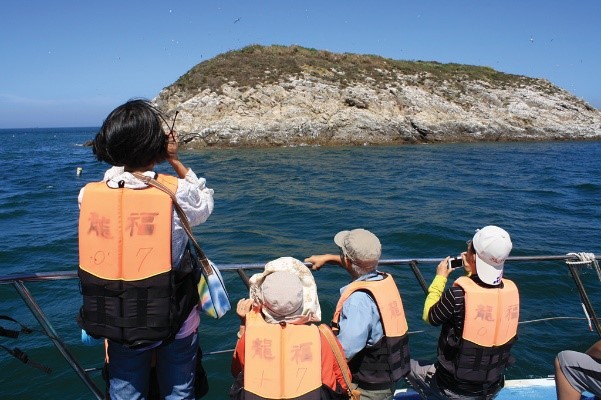
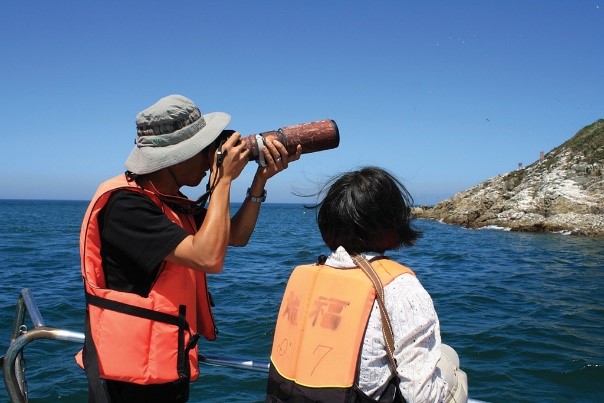
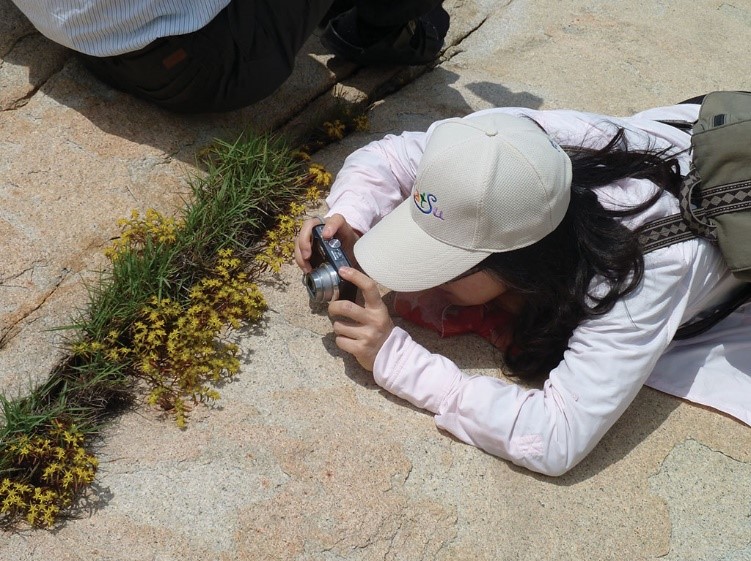
A tern-watching boat trip
Source: https://theme.matsu-nsa.gov.tw/ecologyweb/article.aspx?l=2&a=718
Booklet for Matsu Geopark: A guide for enjoying. Matsu National Scenic Area Administration, Tourism Bureau.










